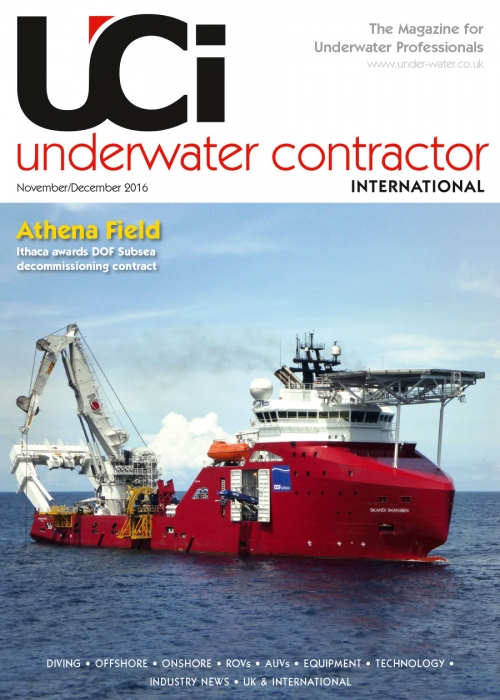
The Magazine for Underwater Professionals
![]() Sep/Oct 2015
Sep/Oct 2015
PRODUCT EYEBALL
Managing a busy seabed with GIS
Helping subsea cable installation teams meet the challenges posed by the ever-increasing amount of seabed infrastructure
With an ever-increasing amount of infrastructure on the seabed, particularly in the shallower continental shelf areas, it is becoming increasingly important to know in advance exactly what potential challenges lie in wait for cable installation teams. For the earliest planning stages of any new project, be it an oil and gas project, dredging or the installation of new power and or telecoms cables, access to the latest and most up to date positional information is essential.
UK-based Global Marine Systems has, over a number of years, developed an industry leading Geographical Information System (GIS), known as GeoCable, which plays a pivotal role in the planning of new offshore projects, with particular emphasis on the subsea cables market.
GeoCable is based on USA-based Intergraph’s off-the-shelf GIS package GeoMedia, which has been optimised by Global Marine for use within the subsea cables market. It is based around a comprehensive database of worldwide submarine telecoms locations, as installed and capturing all subsequent maintenance data.
INSTALLED
Over the past 160 years there have been more than two million kilometres of submarine telecoms cable installed, linking all continents of the world with the exception of Antarctica. For the same number of years, Global Marine has been recording and mapping these cable routes. The GeoCable database contains route information ranging from the first successful transatlantic telegraph cable installed by the SS Great Eastern (designed by Isambard Kingdom Brunel) in 1865, through to the latest fibre optic systems being installed for social media organisations and search engine providers. There are three distinct cable types installed worldwide and the related data is captured within Geocable for each of these:
1) Telegraph cables were the first submarine telecommunications systems, installed between 1850 and the mid-to-late 1940s. Despite their age, the majority of these systems still remain on the seabed and often have to be cleared prior to the installation of new subsea cable systems.
2) Coaxial cable technology began to take over from telegraph cables in the mid-to-late 1940s, ceasing around the mid-1980s with the advent of fibre optic technology. There are very few coaxial systems still in service, with those remaining used only for scientific purposes. As with telegraph cables, the majority of these systems remain in situ.
3) Fibre optic systems have been the only telecoms cable type installed since the mid-1980s, and these systems provide the backbone for the worldwide web and the extraordinary amounts of data traffic sent today.
- Telegraph cables were installed between 1850 and the late 1940s. Despite their age, the majority of these systems still remain on the seabed and often have to be cleared prior to the installation of new subsea cable systems
- Fibre optic systems have been the only telecoms cable type installed since the mid-1980s, and these systems provide the backbone for the worldwide web and the extraordinary amounts of data traffic sent today
GeoCable allows the user to plan new seabed projects around existing cable systems and helps ensure a successful installation, as well as enhanced security of this critical global communications infrastructure.
The software has been designed to provide easy access and analysis of cable data, as well as offering the full functionality of a standard GIS package. Global Marine’s customers utilise the software for many different reasons, ranging from simple overviews of existing infrastructure, to the creation of detailed planned routes and desk top studies.
MANAGE
“Global Marine has a team of experienced staff who manage and update the database, ensuring the system reflects the very latest subsea cable related data,” says the company. “The GeoCable software can be bought as an off-the-shelf package or customised to suit individual customer needs. Furthermore, other GIS data types, such as oil and gas infrastructure databases, can be easily integrated, while customer specific data can also be embedded within the GeoCable environment.
“GeoCable is used widely within the subsea cable industry, helping to ensure new cable routes are planned in the most secure and appropriate manner. It is also used in the wider offshore industry by seabed survey companies, oil and gas companies and research institutes.”
Global Marine says it is committed to maintaining and developing GeoCable to help ensure that not only the needs of the submarine cable industry are taken into account, but also those of other seabed users.


